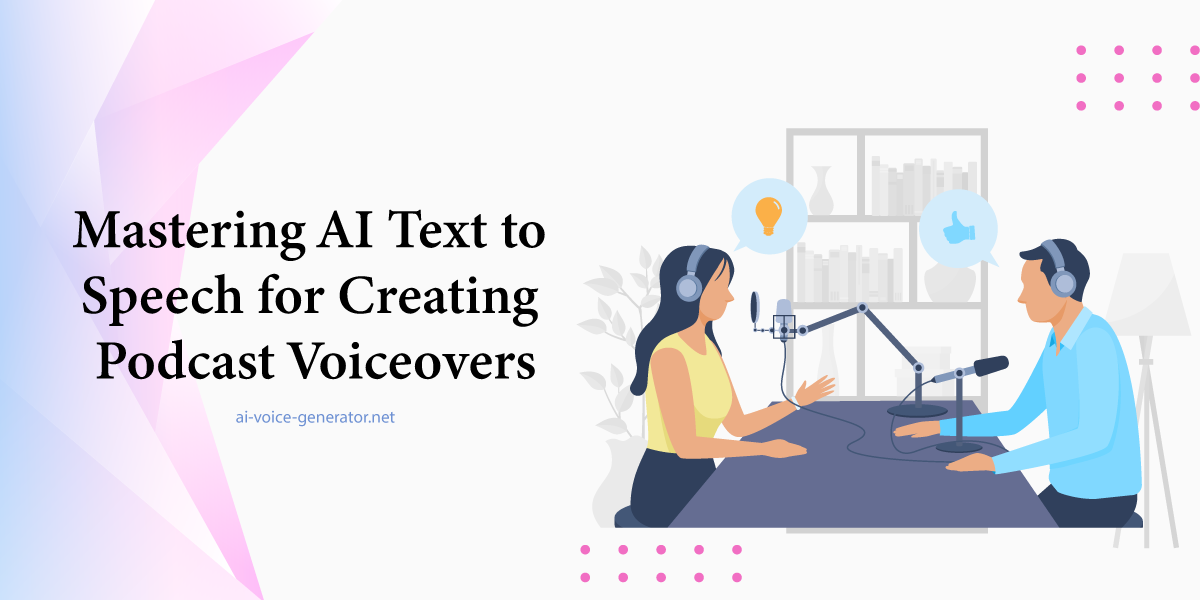
How Text to Speech Is Powering Virtual YouTubers and AI Streamers
In recent years, a new wave of digital creators has emerged—those who don’t show their faces, don’t speak with their real voices, and, in some cases, aren’t even human. These are the Virtual YouTubers (VTubers) and AI streamers dominating platforms like YouTube, Twitch, and TikTok. What’s driving their rise isn’t just creativity and anonymity—it’s the fast-growing capabilities of Text to Speech technology.
The sudden surge in AI-powered personas is deeply connected to how accessible voice generation has become. While digital influencers of the past had to rely on expensive equipment or hire voice actors, today’s creators are increasingly using text to speech free tools to give life to their virtual characters. This allows them to maintain privacy, stay in control, and scale their content like never before.
What makes this trend even more fascinating is how the audience is embracing it. Viewers now care more about personality, storytelling, and originality than whether a streamer is “real.” And behind many of these voices is a powerful engine—ai text to speech—changing the face and voice of content creation.
Rise of AI Personalities in Digital Entertainment
The streaming and content creation world is evolving beyond human limitations. The charm of virtual streamers lies in their limitless character design, freedom of expression, and consistent voice quality, all thanks to text to speech online platforms. These digital personas are often animated with motion capture, but it’s the voice—realistic, emotional, and dynamic—that makes them feel alive.
One of the primary reasons content creators are adopting these tools is the ability to experiment. A creator can test different tones, accents, and styles using various text to speech voices before settling on one that fits their character’s personality. This flexibility enhances creativity and helps maintain engagement with evolving audiences.
Furthermore, the demand for AI voices has also risen due to global accessibility. A Japanese VTuber can now speak to an English audience or vice versa, using high-quality voice synthesis. This bridges the gap between cultures and markets, offering multilingual engagement at scale.
How AI Streamers Use Text to Speech for Branding
AI streamers, whether fully virtual or hybrid, rely heavily on branding—and voice plays a central role. A unique and recognizable voice becomes an audio logo for the creator. Tools like a text to voice generator help craft a consistent audio identity across videos, livestreams, and social media content.
Creating content without needing to record voiceovers for each new script reduces production time significantly. AI streamers can simply input their script and generate a realistic voice track in seconds. This efficiency enables creators to upload more frequently, maintain consistency, and experiment with new formats without being overwhelmed.
A strong brand voice also enhances monetization potential. Whether it’s through donations, collaborations, or merchandise, audiences are more likely to support streamers who feel unique and personal, even if they’re powered by synthetic speech.
Accessibility and Anonymity: Why Creators Choose AI Voices
One of the biggest reasons behind the success of free online text to speech tools in this space is accessibility. Not everyone is comfortable speaking on camera, and not everyone has the tools to record high-quality audio. AI voice generation solves both problems instantly.
For newer creators, especially younger ones, using AI voices helps them explore content creation without exposing their real identities. This lowers the barrier to entry and allows them to participate in a global creative economy. In communities where anonymity is culturally or socially important, this has opened up entirely new career opportunities.
Moreover, those with disabilities or speech disorders can now become streamers and YouTubers with ease. By using text to speech generator technology, they can express themselves confidently and without physical limitations.
Realism and Emotional Nuance in AI Voices
The early days of TTS were robotic and monotonous, but modern systems are remarkably advanced. Today’s top platforms offer text to speech voices that can express emotions, intonation, and pacing almost indistinguishable from human voices.
For AI streamers, this realism is a game-changer. It allows them to create deeper connections with their audiences, tell more engaging stories, and even perform live content using pre-written lines voiced in real time. This level of nuance also lets creators explore different personas without sounding unnatural.
When combined with facial animations and motion capture, the result is a believable digital presence that captivates audiences. In fact, many viewers don’t realize they’re listening to AI voices until it’s revealed.
How Text to Speech Tools Save Time and Scale Content
Consistency is key in online content creation, but maintaining it can be exhausting. This is where text to audio free tools provide a massive advantage. Instead of spending hours recording and editing voiceovers, creators can generate multiple voice lines in minutes.
For VTubers who stream daily or post several videos a week, the time saved adds up quickly. More importantly, they can scale their output without burnout. A single creator can run multiple virtual channels in different languages using the same content, just adapted with different AI voices.
This kind of scaling was impossible just a few years ago. But now, with the help of platforms like AI Voice Generator, it’s becoming a standard growth tactic among smart creators looking to expand their digital reach efficiently.
Innovation in Interactive Content and Live Streaming
One of the most exciting developments in this space is the integration of TTS into interactive livestreaming. AI streamers can now respond to comments, answer viewer questions, or react to super chats using real-time AI text to speech responses.
This adds a layer of spontaneity and fun to streams, while also reducing pressure on the creator. Some streamers even let viewers vote on dialogue lines or send custom messages that get voiced live, increasing engagement and viewer participation.
Interactive AI voice tools are also being explored in gaming streams where the streamer’s character dynamically narrates gameplay or reacts to events using real-time TTS. This innovation keeps audiences engaged and turns every stream into a unique experience.
Challenges and Ethics in the Use of Synthetic Voices
As with any new technology, the use of text to speech generator platforms in entertainment does raise some ethical questions. Should creators always disclose when they’re using AI voices? Are viewers being misled if they don’t?
While most audiences are becoming more tech-savvy and accepting of AI-generated content, transparency is still important. Some creators openly brand themselves as VTubers or AI personas, while others blur the line between fiction and reality.
Another challenge lies in voice identity theft. As TTS technology improves, it becomes easier to mimic real voices, raising concerns about misuse. However, most reputable text to speech online services implement safeguards to prevent unauthorized cloning or misuse.
The Future of AI Voices in Entertainment
Looking ahead, it’s clear that AI text to speech tools are only going to become more advanced. We can expect more emotional depth, natural pauses, and even improvisation in real-time conversations. Soon, audiences might not be able to distinguish between an AI-generated voice and a human one.
Virtual idols and streamers may even become household names, with AI voices powering their media appearances, commercials, and collaborations. The entertainment industry is already experimenting with such possibilities, and the results are promising.
As more creators adopt these tools, we’re likely to see new content formats emerge—interactive series, AI-narrated documentaries, and even fully virtual events hosted by digital influencers.
Why It Matters for Creators Today
Whether you’re an aspiring VTuber, a hobbyist content creator, or a brand looking to experiment with AI storytelling, text to speech free solutions provide the flexibility and scalability you need.
By removing barriers like language, equipment, or voice training, these tools empower a whole new class of creators. The line between fiction and reality continues to blur, and voice is at the heart of that evolution.
FAQs
VTubers often use TTS to maintain anonymity, create consistent character voices, and produce content efficiently.
Yes, real-time TTS tools enable AI streamers to respond to comments and interactions instantly.
Modern TTS tools offer highly realistic voices with emotional nuance, perfect for storytelling and streaming.
Not at all. There are many text to speech free platforms that offer high-quality voices for beginners and pros alike.
While not illegal, it’s best practice to disclose AI usage to maintain transparency with your audience.
Conclusion
Virtual YouTubers and AI streamers aren’t just a trend—they represent the next frontier of digital entertainment. Their rise is closely tied to advancements in text to speech technology, which enables limitless creativity, efficiency, and accessibility. From preserving anonymity to enhancing audience interaction, the benefits are too powerful to ignore.
With platforms like AI Voice Generator making this technology more accessible than ever, there’s no doubt we’ll see even more innovation in this space. For creators ready to step into the future, embracing AI voices might be the smartest move yet.

